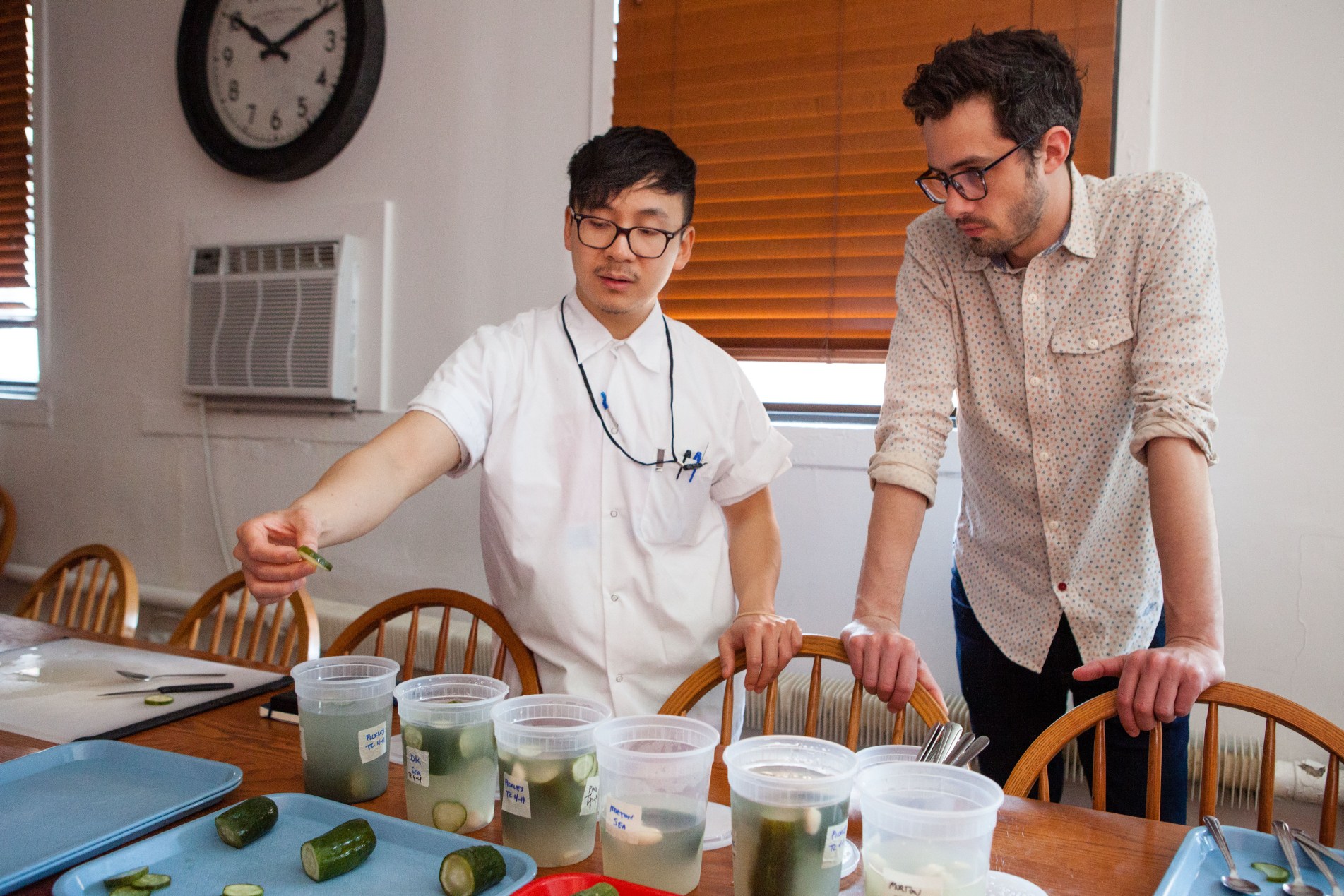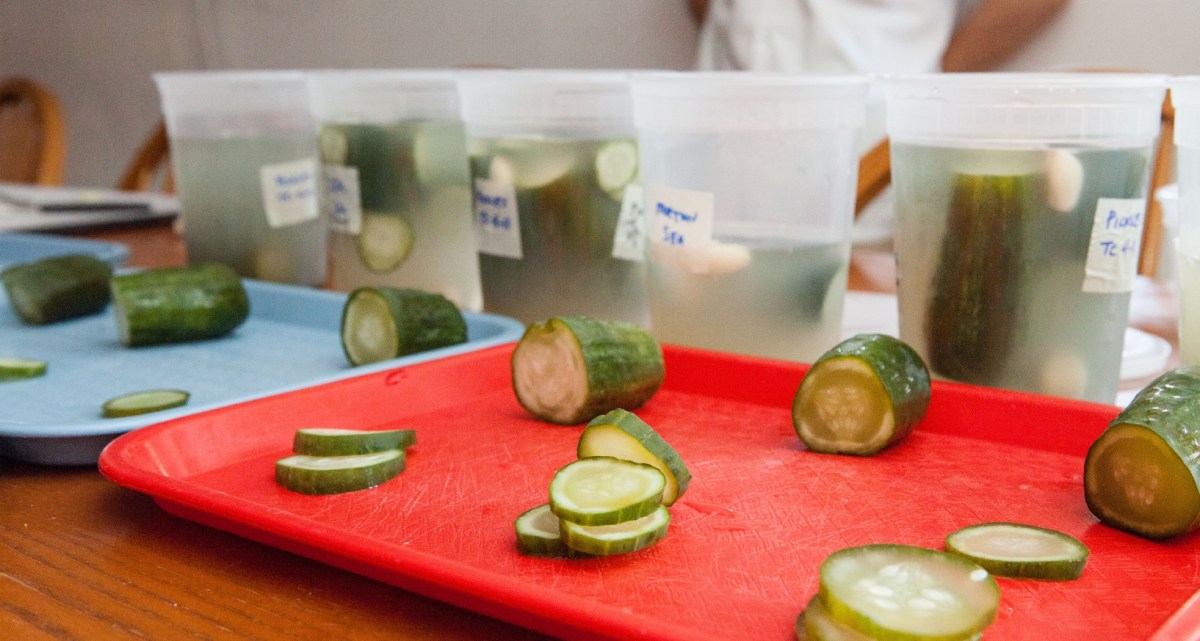In this weekly series, associate editor Tim Chin and test cook Sasha Marx take you behind the scenes of Cook’s Science and give you a glimpse into our recipe development process, from how we come up with recipe ideas, to test kitchen failures, to discoveries we make along the way. This week, Tim talks salt.
Over the last several weeks, Dan, Sasha, and I have been working on recipes to accompany our upcoming feature story about salt. As we develop recipes, we’ve been up to our eyeballs in all kinds of salt—from big, flaky finishing salts, to black lava salt, Himalayan pink salt, even sea salt harvested from the coast of Massachusetts. We’re exploring a few of the many culinary applications for this humble mineral. Most people think that salt is just salt; that it’s nothing more than sodium chloride (NaCl) and it makes your food taste salty. But beneath the surface, salts—especially unrefined salts—can differ drastically in their composition, containing trace minerals, such as calcium and potassium, and even bacteria. More on that in a minute.
One idea I’m investigating is whether these different salts affect lacto-fermentation. Lacto-fermented pickles—or lacto–pickles, as they are colloquially known in many modern kitchens—are having a trendy moment. But nearly every cuisine has lacto-fermented products, from kimchi to half-sour pickles to sauerkraut: It’s very popular because it’s both transformative and surprisingly easy to do. Cut up some vegetables, put them in a salty brine at room temperature, and wait about a week. The brine staves off the growth of harmful bacteria, and in the absence of oxygen, good bacteria, such as Lactobacillus, thrive, converting sugar to lactic acid that pickles the vegetables, making them crunchy, sour, and delicious. (To give the process a try, check out Sasha’s recipe for Fermented Beets and Beet Kvass.)
When we first started talking about the science of salt, Dan pointed me in the direction of Ben Wolfe, Assistant Professor at Tufts University. Ben and his team study the microbiology of fermented foods—from cheese and kombucha, to salami and kimchi. They aim to understand the ins and outs of the fermentation process and even run a website devoted to the subject. (We interviewed one of the Ph.D. candidates in Ben’s lab, Esther Miller, whose research focuses on cabbages.) In one article, Ben highlights surprising microbes found in the rinds of 137 different cheeses. His team discovered the presence of bacteria commonly found in the ocean (among them Vibrio, Halomonas, and Pseudoalteromonas) on the rinds of these cheese samples—even though these cheeses were made nowhere near a body of water. He hypothesizes that these bacteria made it onto the cheeses via sea salts used during the cheesemaking process. And in a cool, damp environment—like a cheese cave—these bacteria tend to thrive.
I immediately wondered if this idea extended to other fermented food products: Could different bacteria grow in a batch of pickles based on the type of sea salt used? And more to the point, could this also affect the flavor of my final product? As a preliminary test, I used a few different brands of sea salts to make separate batches of shio koji and compared them to a batch made with kosher salt. The results were more pronounced than I expected: The samples made with sea salt all tasted different, and overall were much more aromatic and complex than the batch made with kosher salt. For instance, one batch made with Diamond Crystal sea salt was much funkier and sweeter-smelling than all the other samples. By comparison, the batch with kosher salt tasted bland and uninteresting. At least anecdotally, I was onto something.

Scientifically speaking, Ben’s team hasn’t yet been able to directly link the microbes from certain salts with sensory impacts (e.g., flavor, aroma, texture) on fermented foods. But he’s hopeful that there could be links between sea salt used and fermentation outcome. He points to some research from Korean scientists demonstrating that certain sea salts contain lactic acid bacteria that can facilitate kimchi fermentation.
Right now I’m testing this same hypothesis with simple pickled cucumbers. I’ve set up several ferments using different sea salts, and am eagerly waiting while they do their lacto thing. They should be ready by the end of this week. Our team will do a tasting and we’ll see if the different salts produce different pickle flavors and textures. Who knows, maybe I can get Ben to plate out some samples from our pickles to see if we’re onto something? We’ll share our findings on Cook’s Science soon.
Do you have experience with lacto-fermentation? Any cool thoughts about sea salt? Drop a line in the comments below.
Photography by Kevin White.




